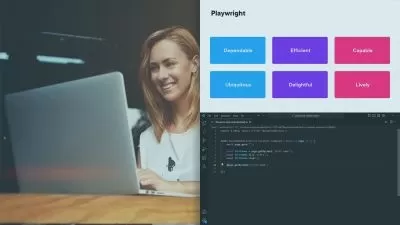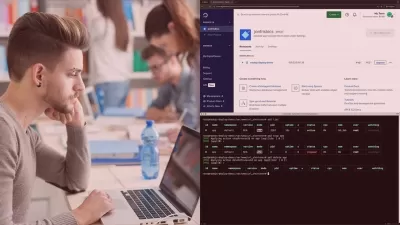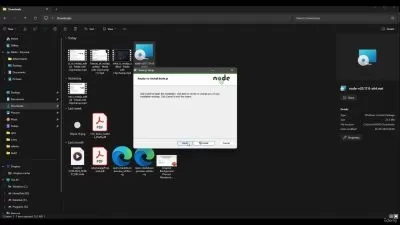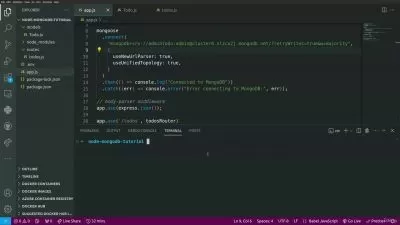About Node.JsLearn More
Node.js is a JavaScript-based development tool for building mobile and web applications. You can also use it to create desktop applications with the assistance of additional developer tools. Its ability to manage asynchronous functions makes Node.js ideal for making chat and gaming apps, but you can use it to build so much more. Node.js training on Udemy can teach you the many ways you can utilize this powerful app creation tool.
Sort by:
Sorting
The newest
Most visited
Course time
Subtitle
Frequently asked questions about Node.Js
Node.Js is a server environment built for fast and easily scalable network applications. It was built on Chrome’s JavaScript runtime and uses an event-driven, non-blocking model that makes it the best fit for applications that run on distributed devices and need to run in real-time. By using JavaScript, node.Js can be put to work by many software developers familiar with JavaScript. Because the code is open-source, you can also use it on any platform (Mac OS, Windows, or Linux). Node.js is the architecture for creating websites and real-time applications because it’s easy for teams to learn, and it’s fast. Examples of applications that use node.Js include video conferencing apps, chat servers, eCommerce software, and collaborative online gaming.
Node.Js is open-source, meaning it’s a free code for all developers. On top of that, it also means that there is a thriving community of Node.Js users and programmers that all add to the knowledge base. Many are happy to share their flavor of the code with other developers, and collectively, the Node.Js environment continues to be enhanced. Because Node.Js uses JavaScript, there is a large pool of developers that understand and can code in the environment. It’s also a relatively simple environment for new team members to learn, making it an efficient choice for development teams with people that need training. Node.Js was developed on Push technology instead of web sockets, which is why it’s the preferred choice for real-time communication applications and programs that need to be highly scalable.
A runtime system is a platform where a software program runs. It’s essentially an environment housing the collection of software and hardware that allows an application to execute (or run). Node.Js is a runtime system because it provides the environment necessary for applications to run within it, and no additional code or hardware is required. Because Node.Js makes use of JavaScript, it’s a runtime system that provides a framework where you can use JavaScript to create and run programs. The JavaScript programming language (which is quite popular) is then automatically translated into machine code for the hardware to run the program in real-time. It’s an efficient system, making it the preferred choice for many software and tech companies.
Microservices architecture is a software development style or method where single-function modules originate. Each has a very well-defined operation and interface and can deploy on its own. In essence, it’s a way of developing modules that you can repurpose from one program or application to another. When you create an application, it’s a collection of modules that have been thoroughly tested and are well-maintained. The modules are typically built around different business-specific capabilities and are then loosely coupled to other modules when deployed as part of a program. You can use Node.Js in microservices architecture as the language of choice for one, some, or all of the microservices (or modules). The beauty of microservices is that you can use the best language for the specific microservice. But where highly scalable, fast programs are needed, Node.Js would be a top contender.











